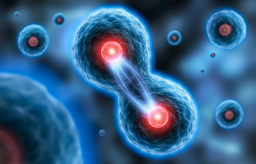Targeting Oncogenic Transcriptional Programs Through Tissue Specificity
TECHNOLOGY NUMBER: 2021-208

OVERVIEW
Targeting oncogenic transcriptional programs through tissue specificity- Identification of a tissue-specific axis of the Wet/beta-catenin signaling complex
- Provides a process to increase the therapeutic index of affected cancer patients
BACKGROUND
The wingless-related integration site (Wnt) and its central component beta-catenin form an evolutionarily conserved mechanism that plays an important role in cellular homeostasis. Wnt/Beta-catenin regulates embryo development, cell proliferation and differentiation, apoptosis, and inflammation-associated cancer. It is highly activated in about 20% of human neoplasms and promotes proliferation of cancer stem cell subsets in tumors. Wnt signaling is associated with tumor resistance to cytotoxic chemotherapy and to the influences of immune-mediated effects. Wnt signaling has been targeted as a method for anti-cancer therapy, though the resulting changes in non-cancer cell homeostasis have caused toxicity that has limited this approach. Therefore, a need exists to develop successful anti-tumor targets through Wnt signaling using a tissue-specific approach to limit adverse effects.
INNOVATION
Researchers at the University of Michigan have identified a novel, tissue-specific axis of the Wnt/beta-catenin programming that creates signaling in oncogenic tissues while not impacting healthy tissues. Through comprehensive molecular profiling studies, this technology identified targets of Wnt signaling that rely on a physical interaction between beta-catenin tissue-specific transcription factors. In cells, beta catenin is recruited to active enhancers in a tissue-specific, transcription-factor dependent manner. Perturbation of this interaction through any one of multiple pharmacological approaches can cause loss of tissue-specific transcriptional programming, reduced viability, and diminished sustained proliferation potential in vitro. These data suggest that the ultimate consequence of Wnt pathway alterations in Wnt-drive cancers is co-optation and mis-engagement tissue-specific transcription factors to reinforce pro-proliferative oncogenic programming. Therefore, this novel approach described by the inventors provides a strategy that increases the therapeutic index and likelihood of success targeting this pathway in future clinical trials.